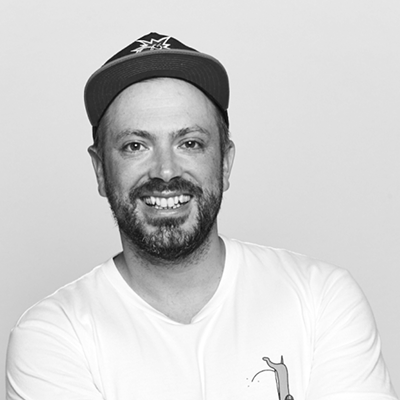Starting a design career can feel daunting, but asking the right questions puts you ahead of the pack. Nicky Bryson, Principal and Co-founder of Sayers Brand Momentum and founder of The Trenches mentoring program, teams up with Andy Wright, Founder of Never Not Creative and CEO of Streamtime, to share practical advice for graphic design students. From reaching out to industry professionals you admire to documenting your thoughts about design's future, they reveal why your fresh perspective and genuine curiosity are actually competitive advantages. Perfect for anyone wondering how to break into design and make their mark in the creative industry.
Starting out in graphic design can feel overwhelming. You've got the skills from your studies, you're picking up freelance work, but where do you actually want to take your career? It's a question that keeps many new designers awake at night, wondering if they're on the right path or missing some crucial piece of the puzzle.
The good news is that thinking deeply about your future in design isn't just normal, it's actually a massive advantage. Most people entering the industry aren't asking these bigger questions, which means you're already ahead of the game.
This question was answered by Nicky Bryson, Principal and Co-founder of Sayers Brand Momentum and a highly experienced brand, consumer and cultural strategist who founded The Trenches mentoring program, and Andy Wright – Host, Founder of Never Not Creative and CEO of Streamtime, bringing years of creative industry leadership and a passion for supporting emerging talent.
The most powerful advice for new designers isn't about perfecting your portfolio or mastering the latest software. It's about reaching out to people whose work or careers genuinely interest you. "I would reach out to interesting people that you follow or like their careers or workplaces and just say that and start a conversation," Nicky suggests.
This isn't about asking for jobs straight away. It's about sharing your perspective on design and seeing how others respond. "Tell them what your point of view on design is and seeing what they say," Nicky explains. These conversations serve a dual purpose: "You might either get a job that way because you've peaked their interest or you might find out where you fit as well."
The key is being genuine about your curiosity. People in the industry are often happy to chat with someone who's thinking seriously about the future of design, rather than just looking for their next gig.
Your thoughts about where design is heading aren't just internal musings, they're valuable content that could set you apart. "Write this stuff down," Andy emphasises. "Publish it. Start a blog."
Even though Andy jokes about feeling old for saying "blog," the principle remains solid. Whether it's a blog, social media posts, or any other platform, getting your ideas out there creates opportunities. "If you get that stuff out there, because it will be a point of difference. You know, there's not many people coming into the industry talking about the future of design," Andy points out.
This kind of forward-thinking content demonstrates that you're not just another graduate looking for work. You're someone who's genuinely engaged with the bigger picture of where the industry is going.
What makes this approach so powerful is how rare it is among new graduates. "People are looking for new people who are questioning the status quo," Andy notes. "I think it's such a great thing to hang your hat on."
Your fresh perspective as someone just entering the industry is actually an asset, not a limitation. You haven't been worn down by "the way things are done" yet, which means you can ask the questions that more experienced designers might have stopped asking.
The Never Not Creative Internship Guide and Resources offers practical support for navigating your early career steps. Whether you're looking for an internship or trying to create better opportunities for yourself, the guide provides templates, advice, and frameworks that can help you approach potential employers with confidence and professionalism. You can find the complete guide at Never Not Creative's internship resources.
Never Not Finishing School is specifically designed to bridge the gap between creative education and employment. This seven-session program connects recent graduates with industry leaders and peers, covering everything from finding your first job to talking about yourself and your work, all while prioritising your wellbeing. The program includes sessions on life after education, business skills, and practical advice from recruiters and hiring managers. It's exactly the kind of structured support that can help you navigate those early career decisions with more confidence. Learn more about Never Not Finishing School.
The fact that you're thinking deeply about where you want to take design in the future isn't a sign of uncertainty, it's a sign of engagement. In an industry that's constantly evolving, having people who are actively thinking about what comes next is invaluable.
Don't be afraid to reach out to people whose work you admire. Share your thoughts about design's future. Write about what you're seeing and thinking. These aren't just nice-to-have activities, they're practical steps that can open doors and help you find your place in the industry.
Remember, you're not behind because you're asking these questions. You're ahead because you're asking them at all.

Principal & co-founder of Sayers Brand Momentum with expertise in brand, consumer & cultural strategy. Founded The Trenches, a global youth mentoring programme delivering 1500+ sessions worldwide.

Clinical psychologist & health manager focused on scaling mental health support through evidence-based, user-centred programmes. Holds a PhD with 20+ published papers on digital health, sleep & best practice. Ask ChatGPT

Founder of Never Not Creative, CEO of Streamtime & co-chair of Mentally Healthy, driven to make the creative industry fairer & more human. Believes great work should never cost wellbeing.



